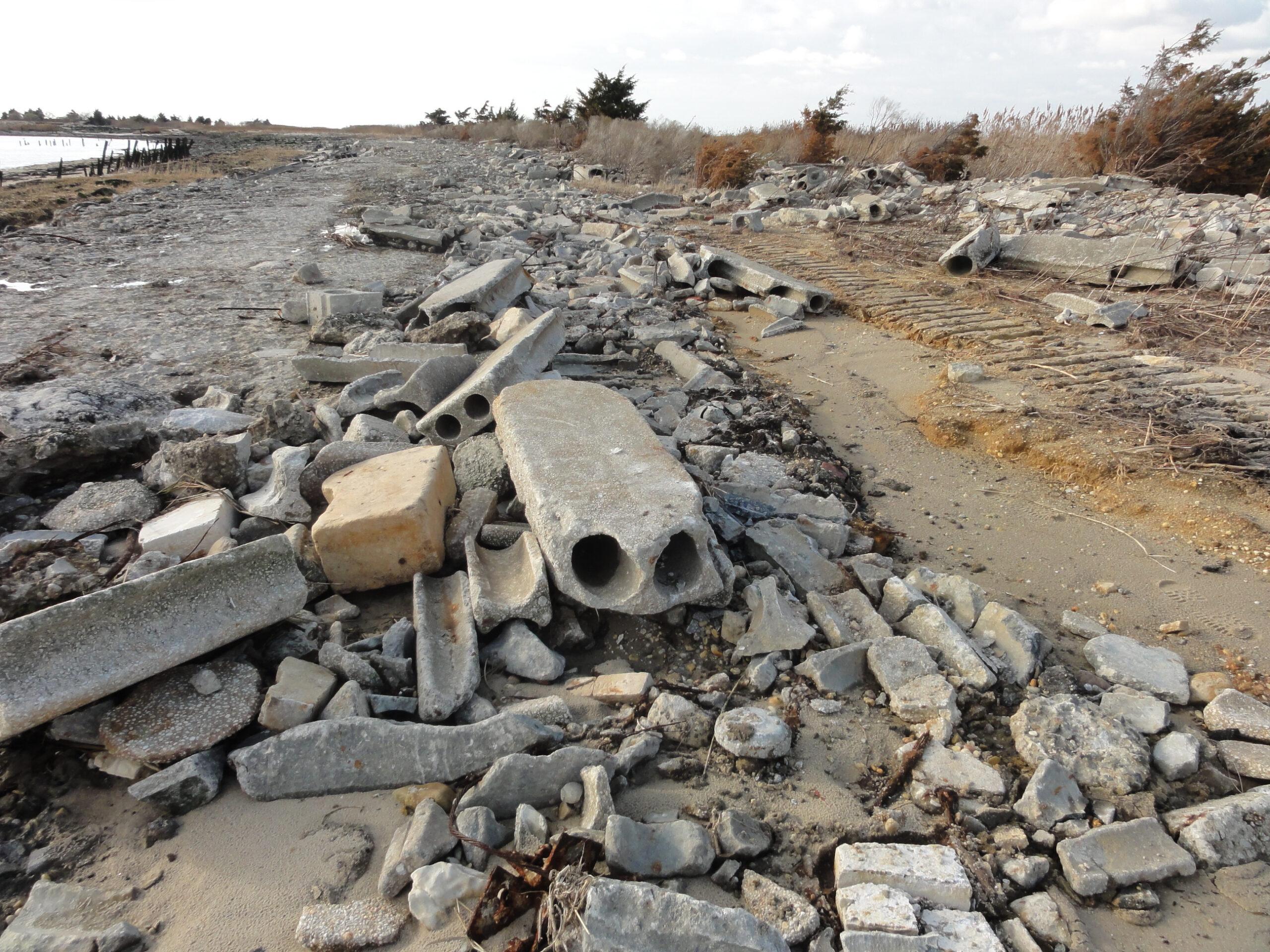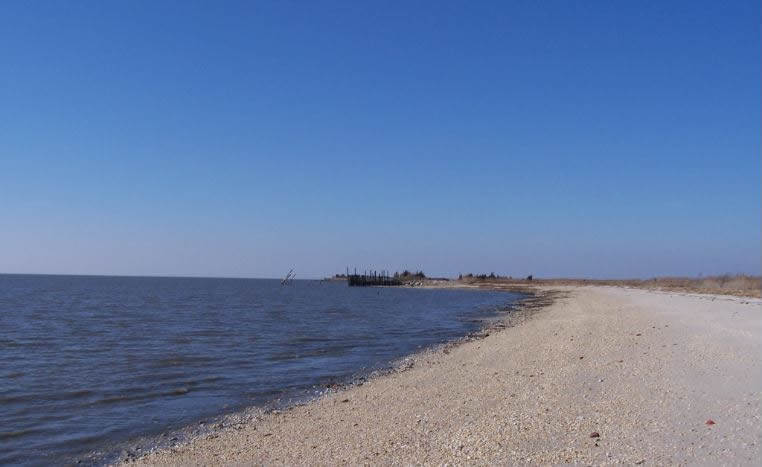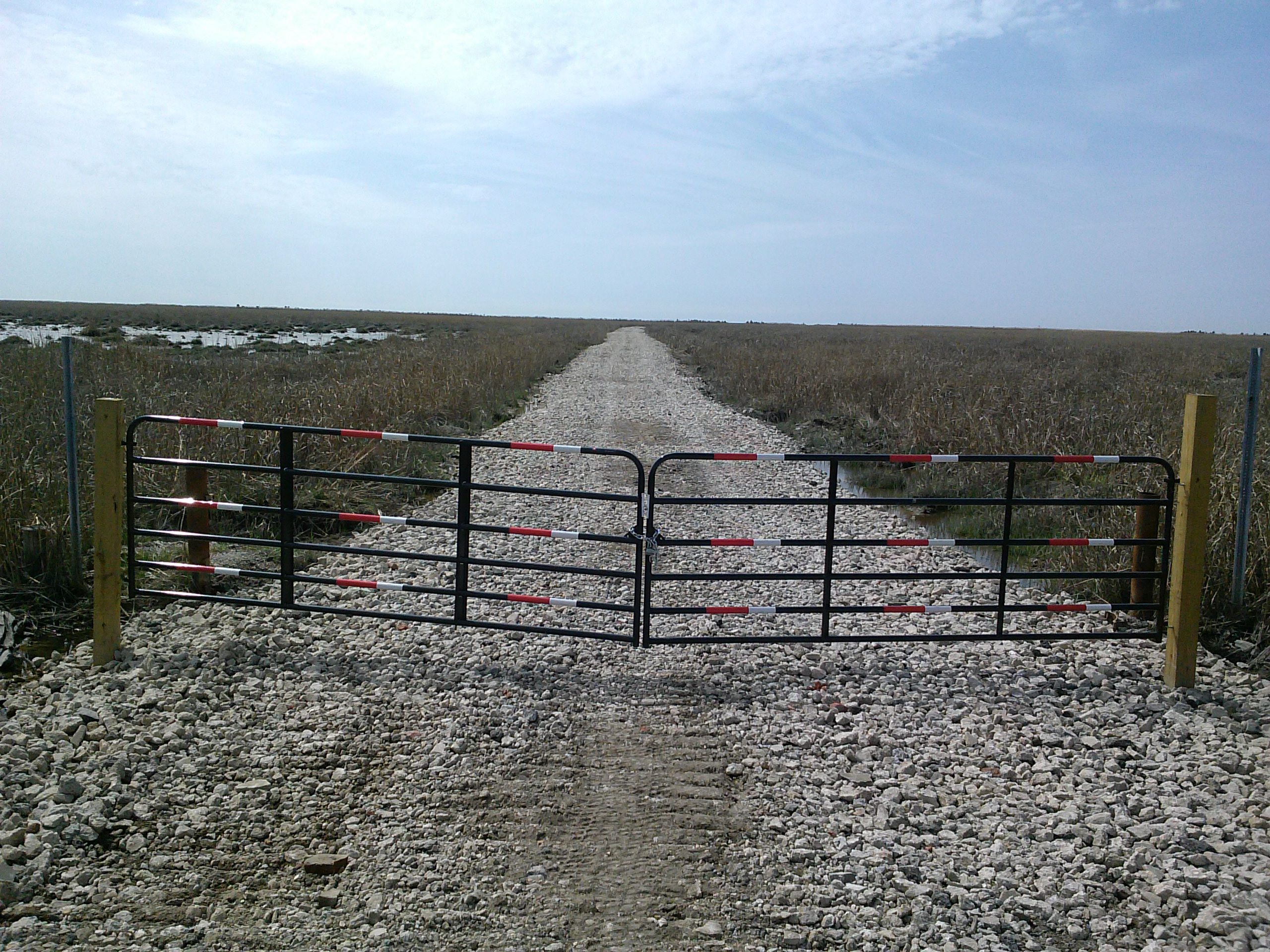Migratory Shorebird Restoration (Thompson Beach)
LOCATION: Maurice River Township, Cumberland County, Delaware Bay
BACKGROUND: In May 1996, the Anitra oil spill on the Delaware resulted in the release of approximately 42,000 gallons of light crude oil into Delaware Bay, oiling beaches and injuring migratory and nesting shorebirds. In order to offset the number of migratory shorebirds lost, $500,000.00 of New Jersey’s share of the Anitra recovery received by New Jersey was allocated to restore habitat for migratory shorebirds. Thompson’s Beach, on the Delaware Bay in Maurice River Township, Cumberland County was heavily utilized by horseshoe crabs and migratory shorebirds before development and erosion reduced the suitability of the beach. This made it a prime location for restoration.
In the past, large numbers of horseshoe crabs came ashore each spring to lay their eggs on this beach. The eggs would feed thousands of shorebirds migrating to their Arctic nesting grounds. In the 1900’s, the beach was gradually developed with small houses and piers. The area experienced serious erosion and storms damaged most homes depositing debris on the beach. In an effort to protect the remaining homes and maintain the waterfront, cinder blocks and concrete rubble were intentionally placed on the beach. The rubble and wreckage from damaged homes drastically reduced the amount of beach available for horseshoe crabs to lay eggs and for shorebirds to feed. More recently, Maurice River Township, with assistance from the State, purchased the remaining homes and in 1998 removed them from Thompson’s Beach. However, the township’s budget did not allow for the removal of the 23,000 cubic yards of debris and rubble scattered over 5,000 feet of beach.
BENEFITS: To restore migratory shorebird habitat that also benefits horseshoe crabs while utilizing the removed material to fill in the severely eroded Thompson’s Beach Road.
PROJECT SUMMARY: The restoration of Thompson’s Beach commenced in fall 2013 and this phase was completed in late winter of 2014. Concrete rubble, timber and debris were removed from the beach east of Thompson’s Beach Road so that the beach could once again be used as egg laying habitat for horseshoe crabs, providing critical foraging habitat for migrating shorebirds. The concrete material was crushed and spread along Thompson’s Beach Road, improving the former eroded public access road to the beach.
PARTNERS: The project was a partnership between state, federal and local government including the NJDEP Office of Natural Resource Restoration and Office of Engineering and Construction, Maurice River Township, the US Fish and Wildlife Service, the National Oceanic and Atmospheric Administration, and the Natural Resources Conservation Service (NRCS). NRCS provided $325,000 toward the restoration.


